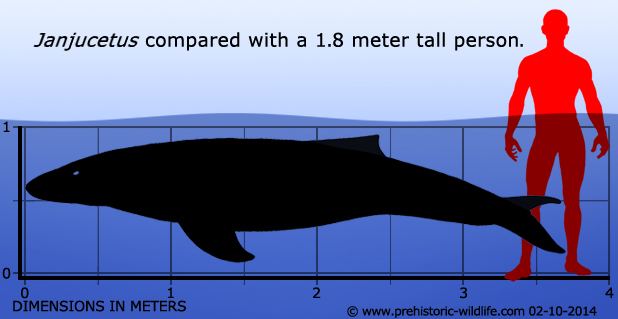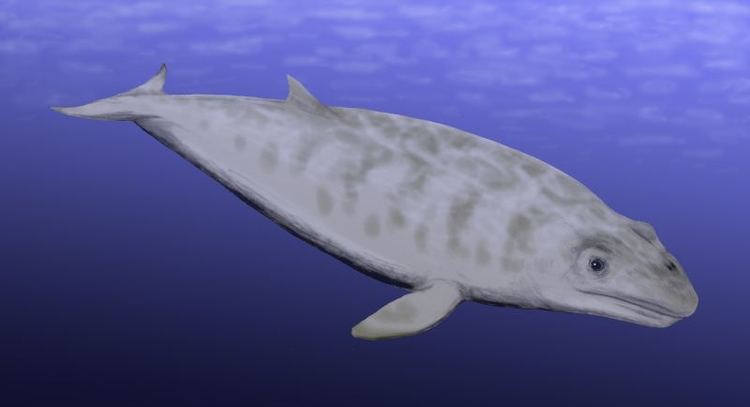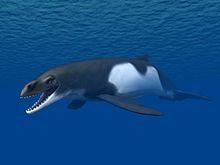Kingdom Animalia Infraorder Cetacea Species †J. hunderi Phylum Chordata Order Even-toed ungulate | Class Mammalia Family †Mammalodontidae Scientific name Janjucetus hunderi Rank Genus | |
Similar Mammalodon, Aetiocetus, Aetiocetidae, Llanocetus, Janjucetus hunderi | ||
Janjucetus ("jan-ju-see-tus", from the Jan Juc township near the type locality, and cetus, Latin for whale) is an extinct genus of whale, and a basal form of the Mysticeti, a clade which includes the extant baleen whales. The only known species, Janjucetus hunderi, lived during the late Oligocene, about 25 million years ago in coastal seas off southeast Australia. Unlike modern mysticetes, it possessed large teeth for gripping and shredding prey, and lacked baleen. Janjucetus was likely to have been a raptorial predator that captured large single prey animals rather than bulk-feeding on small organisms in the manner of living baleen whales.
Contents

Description

Janjucetus is estimated to have been about 3.5 m (11 ft) in length, about the size of the modern bottlenose dolphin and much smaller than any living baleen whale. It is considered to be a mysticete due to key synapomorphies of the skull anatomy, for example in the way rostral bones meet the bones of the braincase. The relatively short snout tapers anteriorly from a broad base and is triangular in dorsal view. The incisors and canines form a terminal rosette of conical stabbing teeth, while the premolars and molars are shaped like serrated blades. The orbits are exceptionally large. No evidence shows Janjucetus possessed the ability to echolocate and probably relied on good eyesight to locate its prey.

Janjucetus is considered to be closely related to Mammalodon, another genus of toothed mysticetes from southeastern Australia. Janjucetus was initially assigned to its own monotypic family, Janjucetidae, but a subsequent cladistic analysis by Fitzgerald (2010) transferred it to the Mammalodontidae, making Janjucetidae a junior synonym.
History
The only known fossil of Janjucetus was found in the late 1990s by a teenaged surfer named Staumn Hunder, near the Victorian township of Jan Juc. The name Janjucetus hunderi, honours both the township and the discoverer. Hunder is said to have seen the brown fossils on a boulder while he surfed. Soon after discovering the site, Hunder and his father removed the boulder and transported it to Monash University for further research. However, until Erich Fitzgerald started long-term research on the fossils in 2003, little had been established about the whale remains. Fitzgerald first published his findings in the journal Proceedings of the Royal Society B.

The well-preserved fossil remains include a nearly complete skull, mandibles, vertebrae, ribs, scapulae, and a radius. They are held in the Museum Victoria Palaeontology Collection in Melbourne, Australia. The holotype of Janjucetus represents the most complete Paleogene cetacean fossil from Australia.

